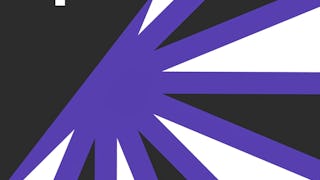This is the first course in a Coursera Specialization track involving Web Application Architectures. This course will give you the basic background, terminology and fundamental concepts that you need to understand in order to build modern full stack web applications. A full stack web developer is familiar with each "layer" of the software technologies involved in a web application, including data modeling and database technologies, the web server environment and middleware components, network protocols, the user interface and basic visual design and user interaction concepts.



Web Application Development: Basic Concepts


Instructors: Greg Heileman
50,075 already enrolled
Included with
(184 reviews)
Skills you'll gain
- Software Development
- Software Architecture
- Agile Software Development
- Middleware
- Databases
- Cascading Style Sheets (CSS)
- Javascript
- Model View Controller
- Application Frameworks
- Ajax
- Ruby on Rails
- User Interface (UI)
- Git (Version Control System)
- Software Design Patterns
- Relational Databases
- Web Applications
- Full-Stack Web Development
Details to know

Add to your LinkedIn profile
2 assignments
See how employees at top companies are mastering in-demand skills

There are 6 modules in this course
What's included
1 video
This module sets the context for what we will study in this specialization by first providing a historical perspective on computing and web applications. Next we provide an overview of how the Internet works, and then we discuss how web applications have evolved over the past few decades. After that we’ll discuss some of the elements of modern software practice, including the typical tools that software engineers now use and the agile development practices they follow. The notion of software design patterns will introduced, and the n-tier architecture design pattern, fundamental to modern web application design, is then presented. Will also discuss a few current topics related to web application development. Finally, we will show you how to set up the software development environment you will use throughout the remainder of the courses in this.
What's included
22 videos3 readings1 assignment2 discussion prompts
In this module you will learn about web application frameworks. We will start by talking about the evolution of software and programming languages, and then talk about software application frameworks. The fundamental trade-off we will consider is programmer productivity versus program efficiency. Next you will learn about web application frameworks, as well as the model-view-controller design pattern that is the backbone for many of these frameworks. We will also consider how these frameworks support the agile programming principles associated with modern software practice. This will include a discussion of distributed version control systems and you will learn how to use the popular Git system. We will also demonstrate how to use Git with a Ruby on Rails application. We will use Git to submit all of the programming applications in this specialization.
What's included
20 videos1 reading1 programming assignment
A successful web application provides information t o users that is (1) useful, and also (2) easy to access and understand. This information is often collected from users, as well as from other information sources, and must be stored in a manner that allows it to be manipulated by the web application. The typical app roach is to store this data in a relational database. In this module you will learn some basic concepts associated with modeling the data in a web application, including h ow to specify the relationships between various data entities. We will also investigate ho w to hook a web application up to a back- end data store, along with good design techniques t hat will make it easier to use the data in your web applications by maintaining consistency th roughout the entire web stack.
What's included
20 videos1 reading1 programming assignment
Middleware is an abstraction layer that hides details about hardware devices and other lower-level software services from an application. Middleware services implement common low-level functions, such as communication with the operating system, application servers, database servers, etc., so that application developers do not need to concern themselves with these details, and can instead focus on the application functionality they are trying to provide. In a web application, these services generally make use of the HTTP protocol, and in a web application framework, the MVC design pattern can be thought of as being implemented over the middleware.
What's included
14 videos1 reading1 assignment
In our final module we will discuss the User Interface. We will touch on CSS and JavaScript, and how these are used to add style to layout and design of HTML documents. We will also learn about Ajax and how it improves user requests.
What's included
14 videos1 reading1 programming assignment
Instructors


Offered by
Explore more from Mobile and Web Development
 Status: Free Trial
Status: Free TrialAkamai Technologies, Inc.
 Status: Free Trial
Status: Free Trial Status: Free Trial
Status: Free Trial Status: Free Trial
Status: Free Trial
Why people choose Coursera for their career




Learner reviews
184 reviews
- 5 stars
63.58%
- 4 stars
21.19%
- 3 stars
4.89%
- 2 stars
1.63%
- 1 star
8.69%
Showing 3 of 184
Reviewed on Sep 10, 2016
Awesome guidance and lecture delivery by the World class professor .
Reviewed on May 4, 2017
Good introductions to all tiers in web application.
Reviewed on Jul 26, 2016
good course - give the big picture perspective. especially if you using ruby on rails!

Open new doors with Coursera Plus
Unlimited access to 10,000+ world-class courses, hands-on projects, and job-ready certificate programs - all included in your subscription
Advance your career with an online degree
Earn a degree from world-class universities - 100% online
Join over 3,400 global companies that choose Coursera for Business
Upskill your employees to excel in the digital economy
Frequently asked questions
To access the course materials, assignments and to earn a Certificate, you will need to purchase the Certificate experience when you enroll in a course. You can try a Free Trial instead, or apply for Financial Aid. The course may offer 'Full Course, No Certificate' instead. This option lets you see all course materials, submit required assessments, and get a final grade. This also means that you will not be able to purchase a Certificate experience.
When you enroll in the course, you get access to all of the courses in the Specialization, and you earn a certificate when you complete the work. Your electronic Certificate will be added to your Accomplishments page - from there, you can print your Certificate or add it to your LinkedIn profile.
Yes. In select learning programs, you can apply for financial aid or a scholarship if you can’t afford the enrollment fee. If fin aid or scholarship is available for your learning program selection, you’ll find a link to apply on the description page.
More questions
Financial aid available,

